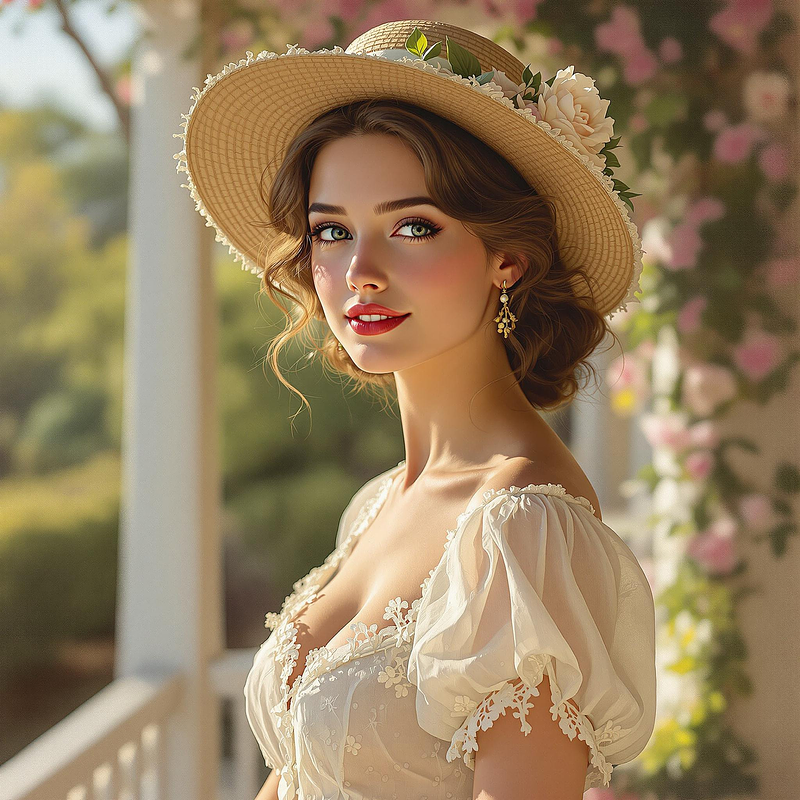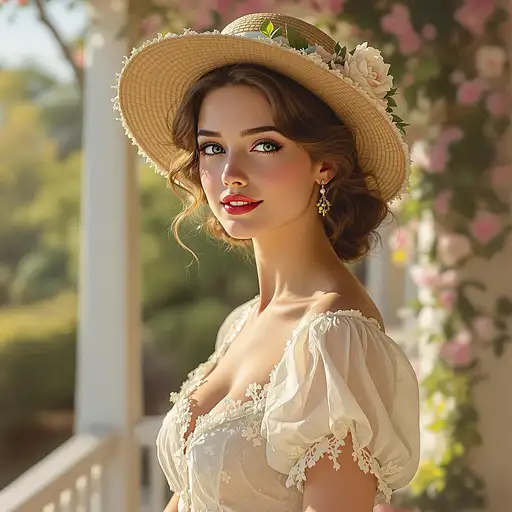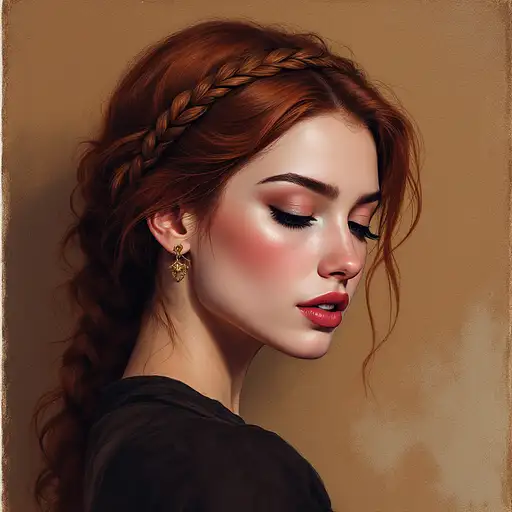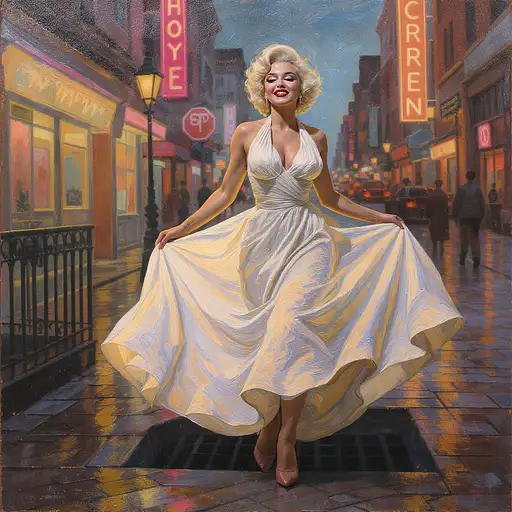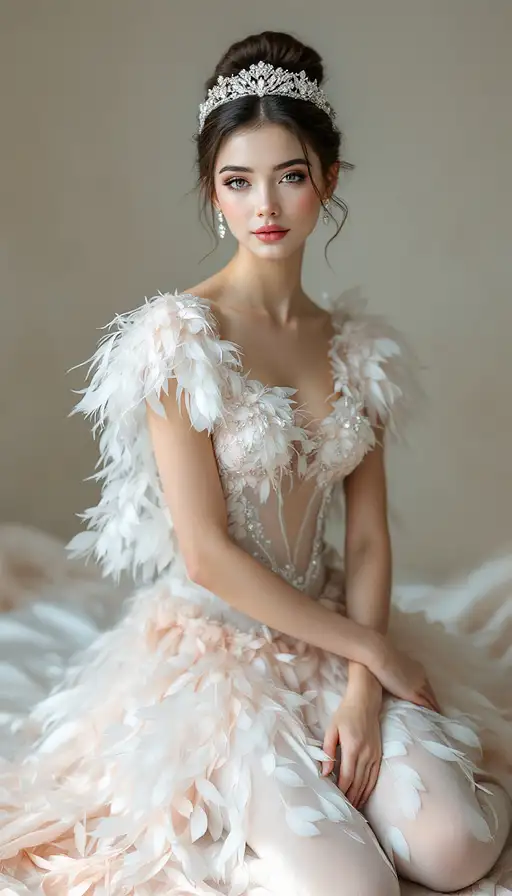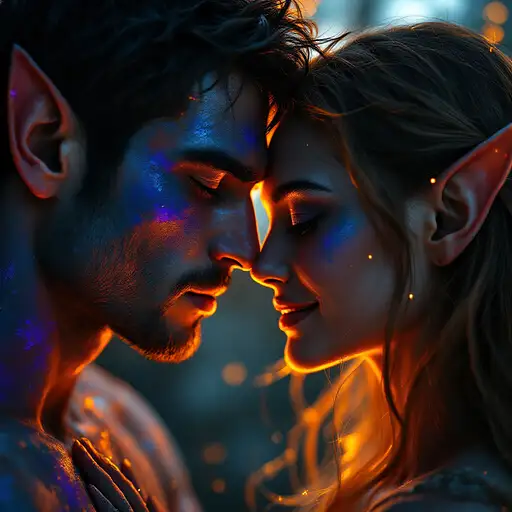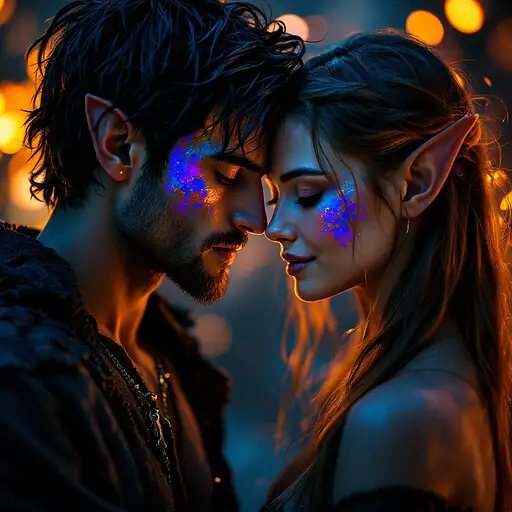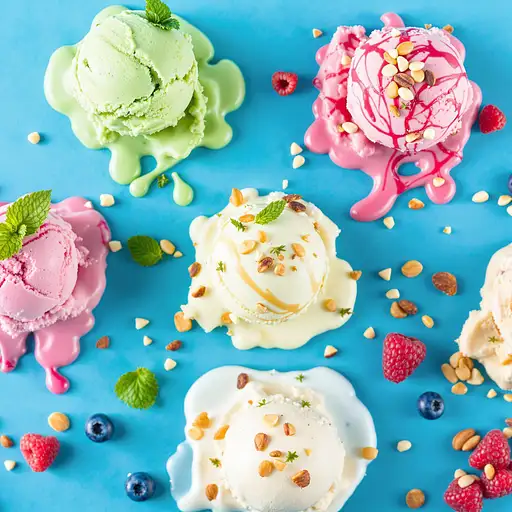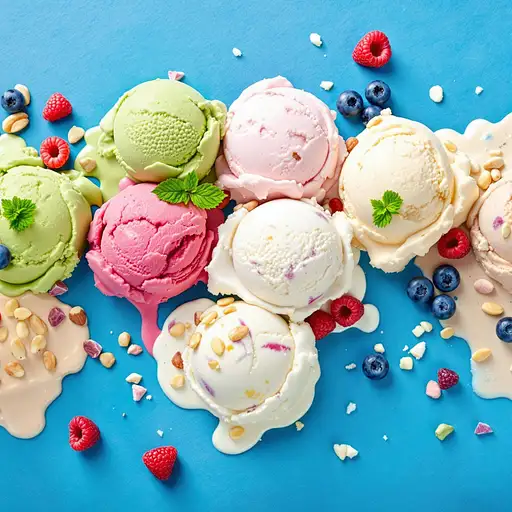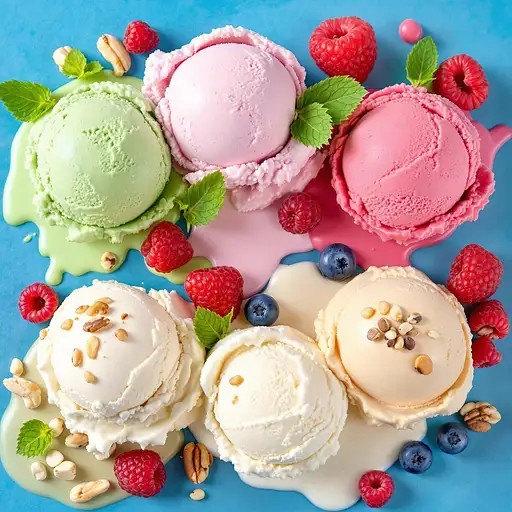
25 days ago
Highly stylized fashion photo from Annie Leibovitz. The image is a thin Hawaiian woman with long, curly, dark brown to black hair that cascades down her back and shoulders. The background is a desolate, grey, cityscape. She stands at the edge of a destroyed bridge. Massive chunks of concrete hang over the river below, cables snapped and tangled. She's clutching a frayed map, her brow furrowed in frustration. The distant skyline is barely visible through thick smoke and rain. She is wearing a traditional outfit. The top is a red, strapless bandeau style with intricate patterns in darker red and white, resembling tribal or woven designs. Around her neck, she wears a beaded necklace with small white beads and a prominent blue-turquoise pendant with a unique, textured design. Her lower garment appears to be a skirt made of natural fibers, possibly straw or woven leaves, featuring a light beige or cream color. The skirt has layered sections, with decorative elements such as woven patterns, cutouts, and some yellow or gold floral designs. A red sash or piece of fabric is tied around her waist over the skirt. The skirt extends roughly to her knees and has a natural, fringe-like hem. She is barefoot, and her body posture shows her with hands on her hips, conveying a sense of confidence and readiness. The overall impression is that of a strong, resourceful, and culturally distinct individual. 1. **Skin Wetness/Oiling Enhancement:** The most prominent effect is the amplification of the wet or oily appearance of the skin. This would involve increasing specular highlights and potentially adding small white/light-colored dots or strokes to simulate water droplets or a very oily sheen. This could be achieved through dodge and burn techniques (selectively lightening highlights), adding a subtle glint or sparkle effect, or enhancing existing reflections. 2. **Contrast Boost (Selective):** There's a strong, perhaps localized, contrast applied that makes the highlights pop significantly, especially on the wet skin, while maintaining deep shadows that hint at form and muscle definition. This isn't a global contrast applied to the whole image, as the background remains relatively soft. 3. **Color Saturation (Warm Tones):** The skin tones appear richly saturated and warm, enhancing the natural warmth of the subject's complexion. This might involve a slight increase in overall saturation, particularly in reds and yellows, or a selective saturation boost to the skin tones. 4. **Shadow Deepening:** The shadows, particularly on the body and the background, are quite deep and consistent, creating a dramatic and somewhat intimate mood. This would involve lowering shadow levels and possibly adding a subtle crush to the blacks to make them darker without losing too much detail. 5. **Reflective Catchlight Enhancement (Eyes):** The catchlights in the subject's eyes are very bright and distinct, making the eyes stand out. This could be achieved by selectively dodging or brightening the existing reflections in the pupils. 6. **Subtle Vignetting (Implied):** While not overtly obvious, there might be a very subtle darkening around the edges of the image, helping to draw attention to the central subject. This would be a soft vignetting effect. 7. **Clarity/Texture Enhancement (Skin, Subtle):** While the skin appears smooth due to the wetness, there's a subtle enhancement of texture in areas that aren't fully blown out by highlights, which could be achieved through a slight increase in clarity or micro-contrast. 8. **Overall Warm Color Grade:** Beyond simple saturation, there might be a subtle warm color grade applied to the entire image, leaning towards warmer greens in the background and warm browns in the skin.
